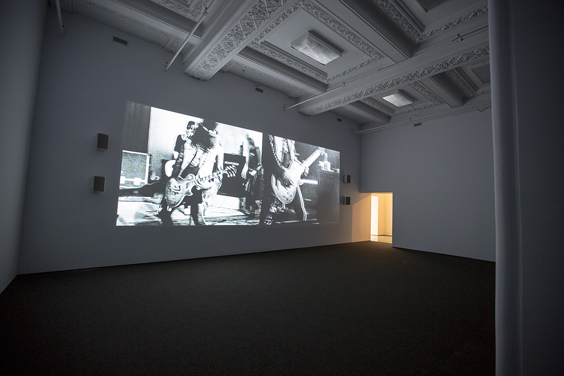
Cory Arcangel, Power Points, exhibition view. Courtesy the artist and DHC/ART, Montréal. Photo by Vincent Toi
Cory Arcangel is a Brooklyn based artist working in diverse media, including video, music, modified videogames, performances and the Internet. Arcangel often makes use of appropriation as a strategy to draw attention to source materials ranging from best-selling albums, Photoshop gradients and UGG boots. While bridging the gap between the highbrow and lowbrow culture, his work explores the nature of cultural production and consumption in a media and technology saturated world. On the occasion of his solo exhibition at the DHC/ART in Montréal, Arcangel talked to M-KOS about his art, his diverse influences and the role of artists as archivists.
MKOS: You started out as a musician, right? How did you make the transition to visual art?
Cory Arcangel [CA]: Its hard for me to explain, it just happened backwards, when I was in high school I was always making videos and you couldn’t go to art school to make video in 1996, so I went to music school. But I also feel in love with the history of music, so when I got out of school I was composing and I was making videos and I just put my work wherever I thought it would be cool and it’s just the gallery people who kept asking for it. So it happened kind of like an accident.
MKOS: Do you still consider yourself a musician?
CA: Yeah I do. I mean, composition is a large part of the practice. I’ve started writing traditional compositions again, and also a lot of the sound you are hearing in between the videos is on purpose, the basketball bouncing, mixed in with the Schoenberg piece. This intense minimal pounding and this other atonal music, from 1909… It’s all like a big sound work to me.
MKOS: And can you explain some of your other choices, why make a drawing of Bill Clinton?
CA: That’s the kind of intuitive feeling that I have, I have no way to explain it critically other than to say: If I ever saw another artist doing a drawing of Bill Clinton I would be very jealous.
MKOS: The timing is interesting in a lot of your work because the imagery is often old enough to feel out of date, but not enough to feel nostalgic, or retro.
CA: Yeah. It’s kind of off putting, but not yet nostalgic.
MKOS: And the “Drawing Machine†technology you used is also obsolete.
CA: Totally.
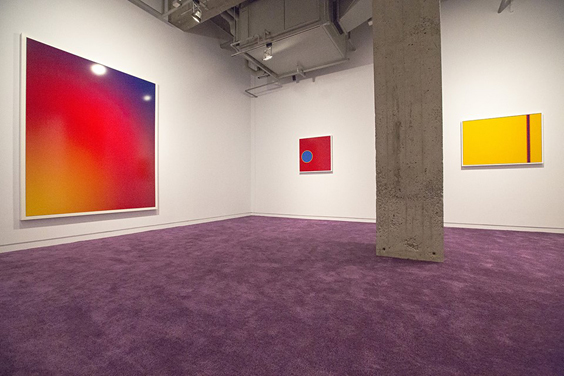
Cory Arcangel, Power Points, exhibition view. Courtesy the artist and DHC/ART, Montréal. Photo by Vincent Toi
MKOS: You also use a lot of historical references, is this a way to make the technology more palatable?
CA: I wouldn’t say that is the reason I use historical references, but, for example this room that we are in now [with the Photoshop Prints Series], some of the work play on the idea of what a painting is. And so certainly it relies on a kind of knowledge of the history of painting, and at the same time, they’re not fake painting, but like a manoeuvre. In a room like this, the goal is to make it look like a room would look if they were paintings. But then in the filling in process – literally these are like fill ins – I couldn’t have possibly filled them in an easier way. So it’s a play on the history of painting but just because it relates to history, it doesn’t mean that the history is propping up in fact I would argue that these are pushing history down.
MKOS: Yes, it has a sort of levelling effect. Also if you had done this in painting, it would have required a lot of work, but here none at all.
CA: [laugh] yeah, it’s a totally different thing.
MKOS: For other works like “Underground Dance Music Collection of Recorded Sound†and the YouTube video re-edits, they sometimes have more to do with curating then creating.
CA: Lately my ideas have been about the artist as archivist. Artists have the ability to preserve culture. Unlike the video games where I actually modified apiece of culture, the record collection is an experiment in saying: “Maybe it’s just enough for me to preserve the culture, lock, stock and barrelâ€. So it’s moving away from an intervention, and moving into the realm of archiving. As an artist, I have access to archives, and the goal would be that an institution would buy those trance records and now, they would be preserved. It’s a way to short circuit a situation that might not happen otherwise. As an artist I have that power to say: “These are important, let’s take these and preserve themâ€. So lately I’ve been moving more into strait archives. And you know it took more that a year to do that. It looks like nothing, but it took so much longer than this whole room of paintings.
“Lately my ideas have been about the artist as archivist. Artists have the ability to preserve culture. […] As an artist, I have access to archives, and the goal would be that an institution would buy those trance records and now, they would be preserved. It’s a way to short circuit a situation that might not happen otherwise.â€
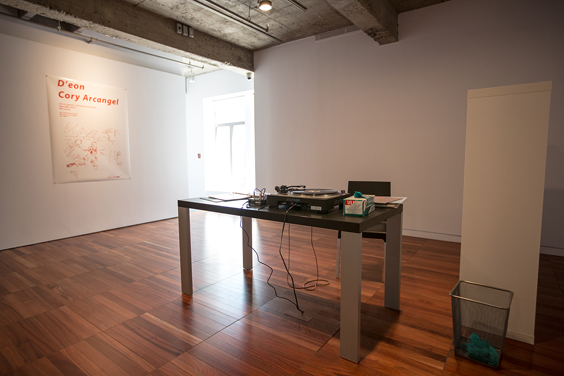
Cory Arcangel, Power Points, exhibition view. Courtesy the artist and DHC/ART, Montréal. Photo by Vincent Toi
MKOS: But you can’t just appreciate this record collection, or these paintings because of the amount work that went into them.
CA: That’s one thing but these paintings even if they didn’t take a lot of work, they would still have value because of the history that is attached to something that looks like that, like a yellow thing with a stripe has value because of the last 50 years of colour field painting. That’s the kind of history which gives it power.
MKOS: Can you say the same thing about the cat video playing Schoenberg?
CA: To me that relates more to the history of composition. Which is something that plays a little differently in a gallery than the history of visual art. To me that work is really just an experiment in distribution, when I put it online, it was interesting to me to find out how far Schoenberg could spread and we had a lot of people listening to Schoenberg who would never listen to him or even know who he was. And it’s the opposite here in the gallery. You’re sitting strait at these videos, which traditionally, they’re not high culture. Physically the work is video, but the art is about distribution.
MKOS: So if we think of Walter Benjamin’s famous ideas about the loss of the aura when you mechanically reproduce an artwork, isn’t it ironic that what you do has more value when it is reproduced?
CA: Well, I’m not going to take one Walter Benjamin but I will take on people dismissing my work when it is reproduced. The fact that my stuff rolls around the Internet, the videos get linked to all these other things, of course that is the value. These works play on that, like what does it mean to be exclusive and be reproducible. There are ways to play with all this.
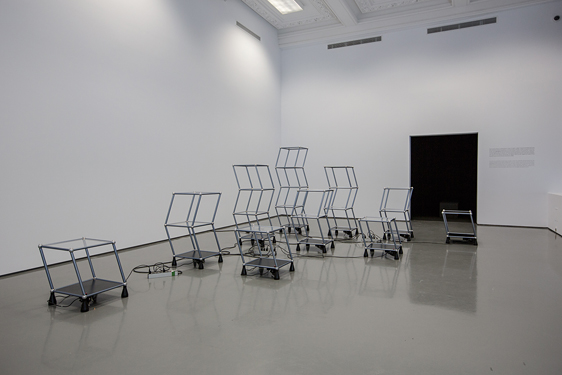
Cory Arcangel, Power Points, exhibition view. Courtesy the artist and DHC/ART, Montréal. Photo by Vincent Toi
MKOS: You also mention Gary Larson as one of your inspiration.
CA: Yeah. I was so into The Far Side. I mean, that is the greatest. And he only did it for about twelve years. I have the complete bible of his comics. He’s the greatest. You can see that kind of humour in my work.
MKOS: A self-defeating kind of humour?
CA: Yeah. And its also just little shifts in meaning. The far side and Seinfeld are two things I really like. But I say that honestly when I reference those things because those are really important to me.
MKOS: And now you’re getting very busy with your shows, you even had a solo at the Whitney museum already, is there another big project you’re looking forward to?
CA: It was about ten years between when I started showing in galleries and the Whitney show. I just made the stuff and if someone asked me to show, I just said cool, and it just kind of happened. But I mean it was a lot of work, I’ll say that. I worked strait for ten years. But you can see from the work that a lot of it is pretty fun. My next project is I’m going to re-open up the store on my website, so people can buy merchandise and stuff. I used to have one seven or eight years ago. People would buy records and multiples and posters and stuff. And I always wanted to do it again but I got tired of going to the post office. But now I found a way to do it without going to the post office. â–
Interviewed by Oli Sorenson
Cory Arcangel was born in 1978 in Buffalo, New York. He received his B.M. from the Oberlin Conservatory of Music. His recent solo shows include Lisson Gallery, London (2011); the Whitney Museum of American Art, New York (2011); Barbican Art Gallery, London (2011); Hamburger Bahnhof, Berlin (2010-11); Museum of Contemporary Art, Miami (2010); Power Plant, Toronto (2010); University of Michigan Museum of Art, Ann Arbor (2010) and among others. His work has also been included in numerous group shows internationally. Arcangel is represented by Team Gallery in New York and Lisson Gallery in London. Arcangel lives and works in Brooklyn, NY. coryarcangel.com
Cory Arcangel
Power Points
21 June – 24 November 2013
at DHC/ART
DHC/ART
451 & 465, St-Jean Street, Montreal,
Quebec, H2Y 2R5, Canada
dhc-art.org
Opening hours
Wednesday – Friday: 12h00 – 19h00
Saturday – Sunday: 11h00 – 18h00
Special event:
Cory Arcangel + D’Eon in concert
presented by DHC/ART Foundation for Contemporary Art, Phi Centre & POP Montréal
26 September 2013
Doors: 7PM / Show: 8PM
at Phi Centre
Phi Centre
407 Saint-Pierre St, Montreal, Quebec, Canada
phi-centre.com
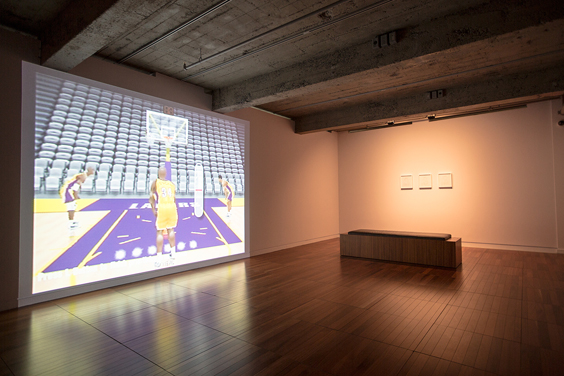
Cory Arcangel, Power Points, exhibition view. Courtesy the artist and DHC/ART, Montréal. Photo by Vincent Toi
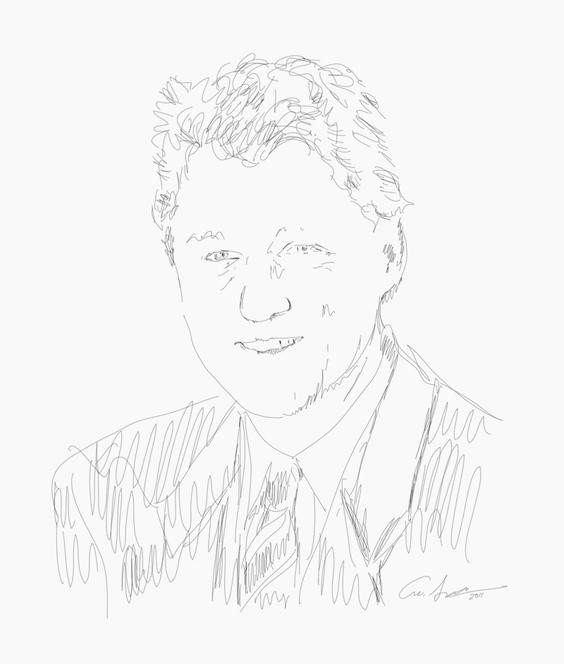
Cory Arcangel, Clinton, 2011. Pencil on paper. Courtesy the artist
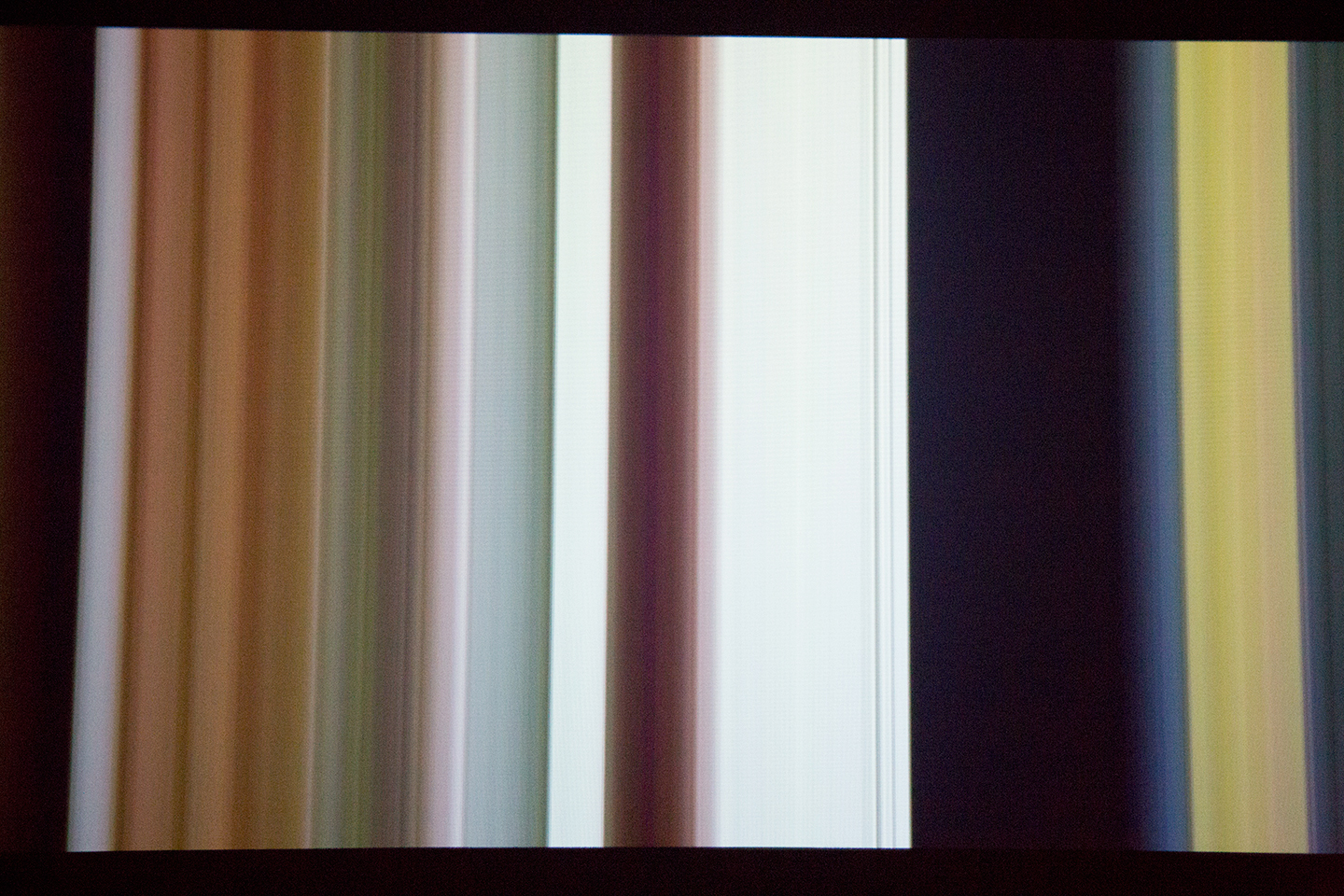
Cory Arcangel, Power Points, exhibition view. Courtesy the artist and DHC/ART, Montréal. Photo by Vincent Toi
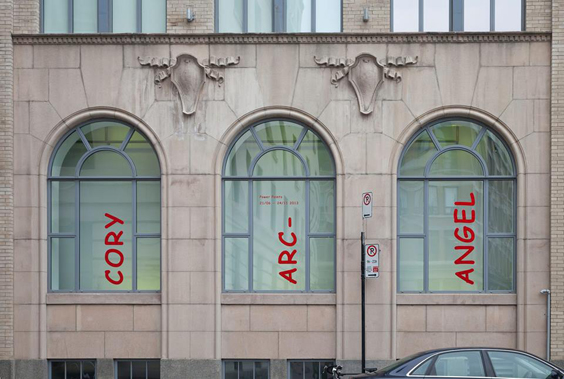
Image courtesy DHC/ART, Montreal
